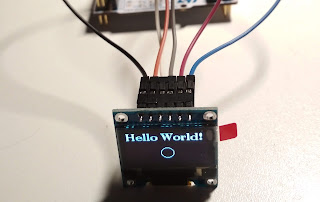Use PCM5102 with STM32
Use PCM5102 with STM32 PCM5102 and STM32 Here are my tiny notes about the connection of PCM5102 DAC to STM32F401 Nucleo board. I2S interface requires three wires to work: SCK is officially called as “continuous serial clock (SCK)”, but also you can found “bit clock” name. It is just the same clock as usual in the SPI interface. Word Select clock is used to select, which cannel is active now, 0 for left channel, 1 for right. It also called called “left-right clock (LRCLK)” or “frame sync (FS)”. Serial data - actual data. CubeMX settings Wiring diagram My board has such pins: | 3.3V | 3.3V on Nucleo board | | FLT | Filter select, grounded: select normal latency, grounded | | DMP | De-emphasis control, grounded(OFF) | | SCL | System clock input, in datasheet SCK pin. System clock is internally generated, it should not be wired anywhere | | BCK | Audio data bit clock input. In I2S terminology is equivalent to serial clock(SCK) I've connected i
